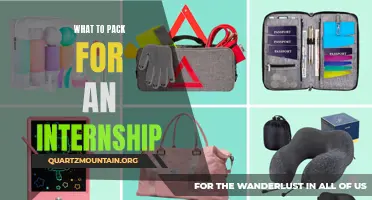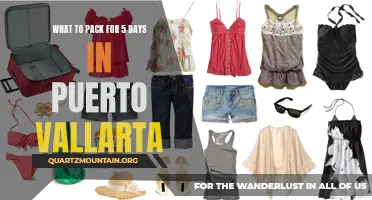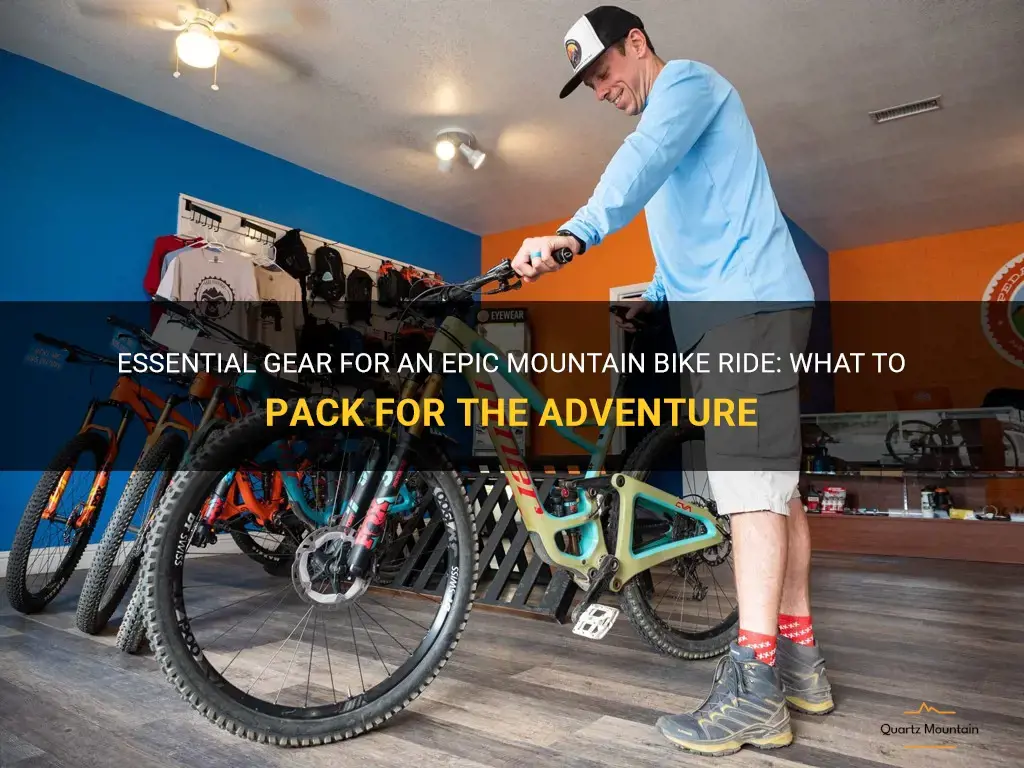
Are you a thrill-seeking adventurer ready to take on the mountains with your trusty mountain bike? Before you hit the trails, it's crucial to ensure you have all the essential gear packed for an epic ride. From safety equipment to tools and accessories, being properly equipped will make your mountain biking experience unforgettable. In this guide, we'll explore the must-have items to pack for your thrilling and exhilarating mountain bike adventure. Get ready to conquer the mountains with confidence and style.
| Characteristics | Values |
|---|---|
| Helmet | Essential |
| Gloves | Recommended |
| Knee and elbow pads | Recommended |
| Hydration pack | Recommended |
| Multi-tool | Essential |
| Spare tube | Essential |
| Pump | Essential |
| Tire levers | Essential |
| Patch kit | Essential |
| First aid kit | Recommended |
| Snacks | Recommended |
| Cell phone | Recommended |
| Trail map | Essential |
| Sunscreen | Recommended |
| Sunglasses | Recommended |
| Extra layers of clothing | Recommended |
| Bike lock | Optional |
| Bike lights | Recommended |
| Bike repair stand | Optional |
| Bike chain lubricant | Recommended |
| GPS device | Optional |
What You'll Learn
- What essential items should I pack for a mountain bike ride?
- How should I dress for a mountain bike ride?
- What safety gear do I need to bring on a mountain bike ride?
- Are there any specific tools or equipment I should bring for maintenance or repairs?
- Are there any recommended snacks or hydration options for a mountain bike ride?

What essential items should I pack for a mountain bike ride?
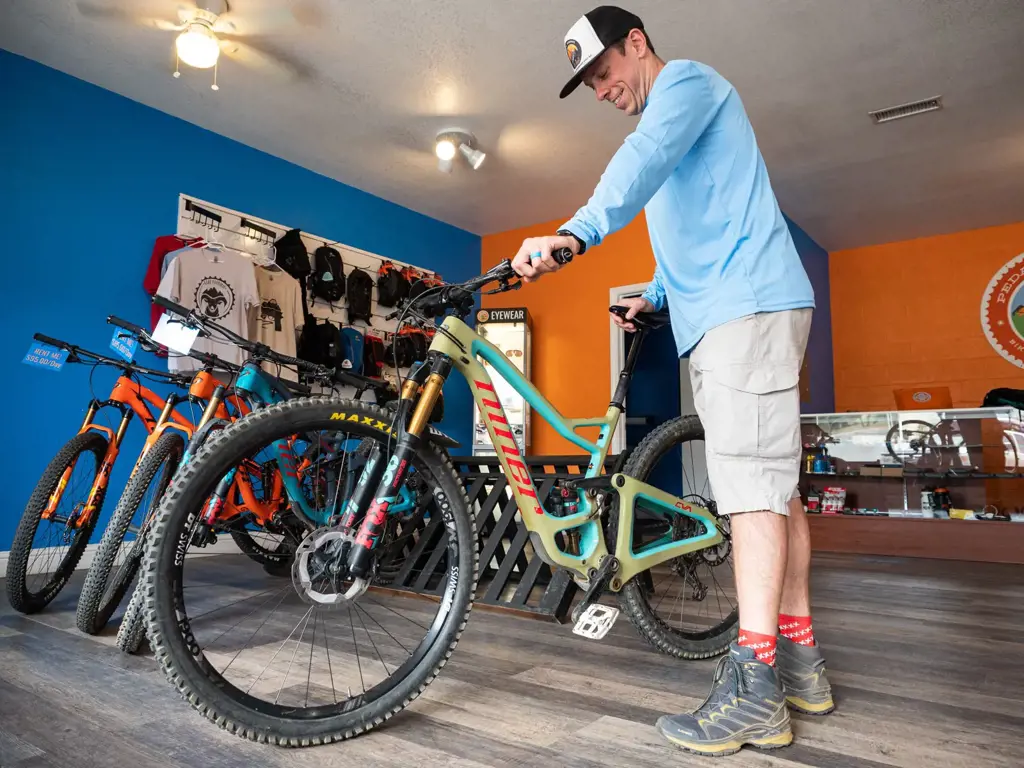
When preparing for a mountain bike ride, it's essential to pack the right gear and equipment to ensure a safe and enjoyable experience. Here are some of the essential items you should bring along on your next mountain bike adventure.
- Helmet: A properly fitting helmet is the most important safety equipment you should wear while mountain biking. It protects your head in case of a fall or crash and can help prevent serious injuries.
- Gloves: Mountain biking gloves provide better grip on the handlebars and protect your hands from blisters and scrapes. They also offer some padding to absorb shocks and vibrations, improving your overall comfort.
- Eye protection: Sunglasses or clear lenses are necessary to protect your eyes from dust, dirt, insects, and branches. Ensure they have lenses designed to block harmful UV rays.
- Clothing: Wear moisture-wicking and breathable clothing to keep you comfortable during your ride. Opt for padded cycling shorts to provide cushioning and reduce friction.
- Footwear: Use sturdy and grippy mountain bike shoes that are compatible with your pedal system. These shoes provide better power transfer and control while also protecting your feet from impacts and debris.
- Tools and repair kit: Carry a multi-tool with various sizes of Allen keys, screwdrivers, and a chain tool. It's also prudent to pack a spare tube, tire levers, a mini pump, and a patch kit in case of a flat tire.
- First aid kit: Accidents happen, so it's essential to have a basic first aid kit. Include band-aids, adhesive tape, antiseptic wipes, gauze pads, and any necessary medication or personal items.
- Water and nutrition: Staying hydrated is crucial, so bring enough water for your ride. Consider carrying a hydration pack or water bottles mounted on your bike. Additionally, pack some energy bars, gels, or other high-energy snacks to fuel your ride.
- Navigation tools: Depending on your trail, you may need a GPS device, a detailed map, or a compass to navigate unfamiliar terrain. Ensure you are familiar with the trails and carry the necessary tools to avoid getting lost.
- Communication devices: A cell phone is a must-have for emergencies or if you need to communicate with fellow riders or emergency services. Just make sure it is fully charged and protected from water and impacts with a suitable case.
Remember to always check the weather forecast before your ride and dress accordingly. Additionally, let someone know your planned route and estimated return time for added safety. By packing these essential items, you'll be well-prepared for a fantastic mountain bike adventure.
The Ultimate Packing Guide for a Mediterranean Cruise
You may want to see also

How should I dress for a mountain bike ride?
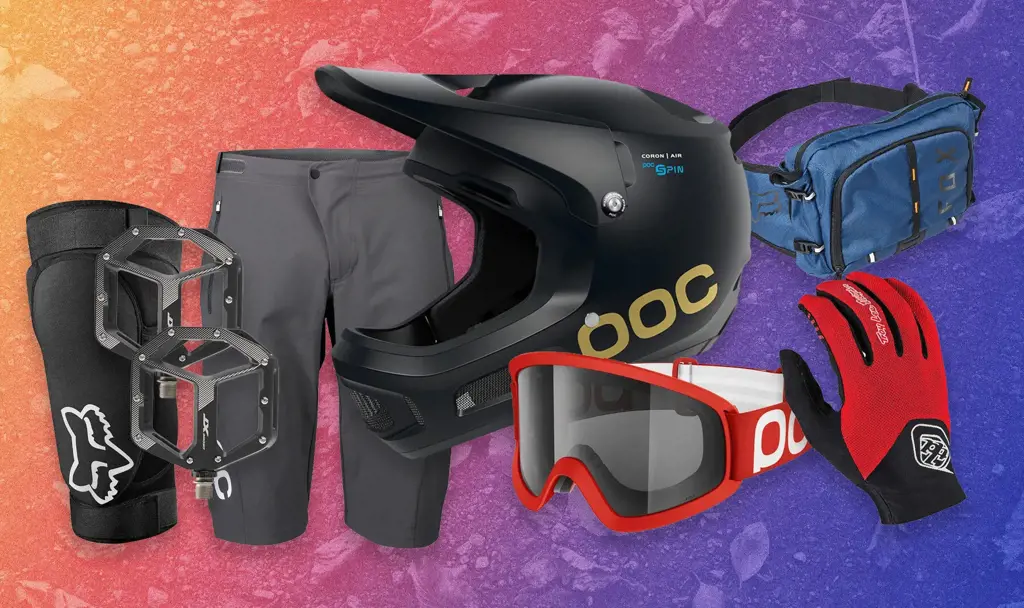
When planning to go for a mountain bike ride, it is important to dress appropriately to ensure comfort, safety, and maximum performance on the trails. Proper clothing can protect you from the elements and enhance your overall riding experience. Here are some tips on how to dress for a mountain bike ride.
- Helmet: Safety should be your top priority when riding a mountain bike. Always wear a well-fitting helmet that meets safety standards. It should be snug on your head and cover your forehead, providing full protection in case of a fall or collision.
- Mountain bike jersey: A good quality mountain bike jersey is designed to wick away sweat and keep you cool during your ride. Look for one that is breathable and lightweight, with moisture-wicking properties to keep you dry and comfortable. Opt for bright colors or high-visibility patterns to enhance your visibility on the trails.
- Shorts: When it comes to shorts, you have two main options - baggy shorts or lycra shorts. Baggy shorts offer more freedom of movement and have additional pockets for storage. Lycra shorts, on the other hand, are more aerodynamic and suitable for speed-oriented riding. Choose whichever style makes you feel most comfortable.
- Gloves: Mountain bike gloves provide grip, protection, and comfort. They should have padded palms to absorb shock and enhance grip on the handlebars. Look for gloves with breathable materials and a snug fit to prevent blisters and enhance control.
- Socks: Choose moisture-wicking socks that go up above your ankles. They should provide cushioning and prevent friction to avoid blisters. Merino wool or synthetic materials are good options as they dry quickly and prevent odor.
- Shoes: Invest in a pair of mountain bike shoes that offer a stiff sole and good traction. They should provide a secure fit, allowing you to transfer power efficiently to the pedals. Look for shoes with breathable uppers to keep your feet cool and dry.
- Protective gear: Depending on the difficulty of the trail and your riding style, you may need additional protective gear such as knee pads, elbow guards, or a back protector. These can provide added protection in case of a fall or crash.
- Layers: Always dress in layers to accommodate changes in weather and temperature. Start with a breathable base layer that wicks away moisture. Add a mid-layer for insulation and a lightweight, waterproof outer layer if there is a chance of rain. This way, you can easily adjust your clothing to stay comfortable throughout your ride.
- Sunglasses: Protect your eyes from dust, debris, and harmful UV rays by wearing sunglasses or clear goggles. Choose a pair with shatterproof lenses for durability and good coverage to avoid direct sunlight.
- Other essentials: Don't forget to carry a small backpack with essentials like a spare tube, tire levers, a multi-tool, a hydration pack, and snacks. These will come in handy in case of mechanical issues or to keep yourself fueled during longer rides.
In conclusion, dressing appropriately for a mountain bike ride is crucial for safety, comfort, and performance. Choose clothing and gear that is designed for mountain biking, considering factors such as protection, breathability, and moisture-wicking properties. Layer your clothing to accommodate changing weather conditions and don't forget to carry essential items for emergencies. By following these tips, you can fully enjoy your mountain bike ride while staying safe and comfortable on the trails.
Essential Items to Pack for a Memorable Trip to Punta Cana in the Dominican Republic
You may want to see also

What safety gear do I need to bring on a mountain bike ride?
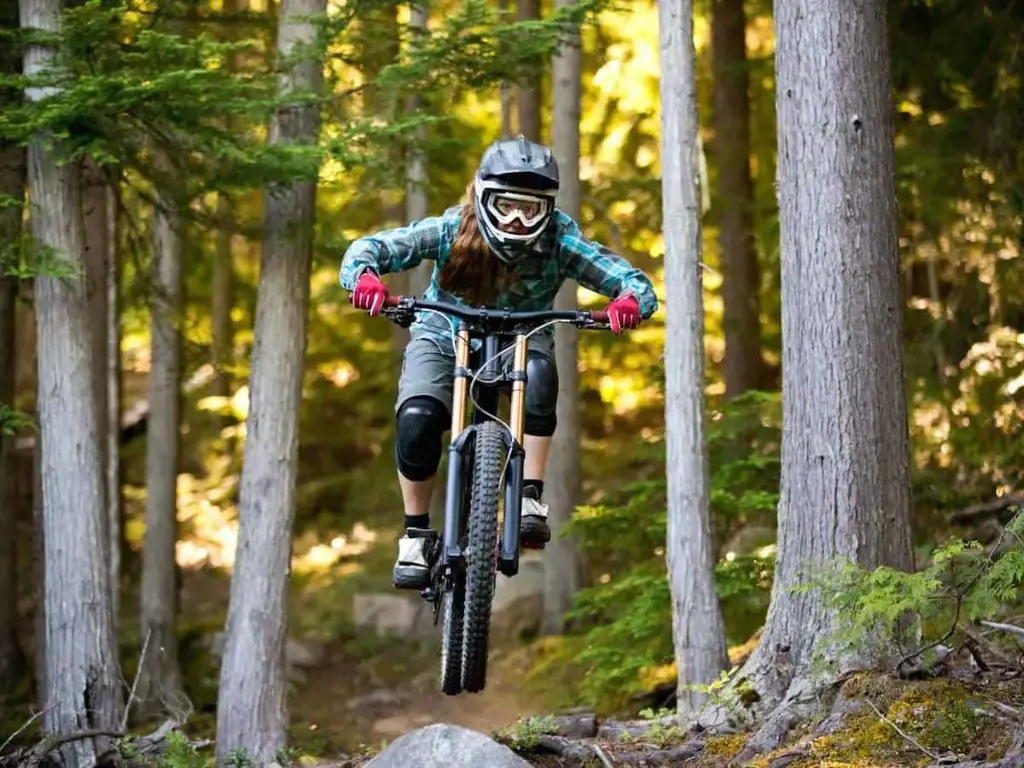
Mountain biking can be an exhilarating and challenging outdoor activity. With rugged terrain, unpredictable weather, and potential hazards, it is important to prioritize safety when heading out for a mountain bike ride. To ensure a safe and enjoyable experience, it is crucial to bring along the right safety gear. Here are some essential items you should pack before hitting the trail.
- Helmet: The most important piece of safety gear for any mountain biker is a properly fitting helmet. It protects your head in case of a crash or fall, reducing the risk of serious head injuries. Look for a helmet that meets the safety standards set by organizations like the Consumer Product Safety Commission (CPSC) or the American National Standards Institute (ANSI).
- Gloves: A good pair of gloves serves multiple purposes while mountain biking. They provide better grip on the handlebars, absorb vibrations, and protect your hands in case of a fall. Look for gloves with padding on the palms and a snug fit for maximum comfort and protection.
- Eye Protection: When riding off-road, your eyes are susceptible to debris, branches, and dirt. Investing in a good pair of cycling glasses or goggles can help protect your eyes from these hazards. Look for glasses with shatterproof lenses and a snug fit to prevent them from falling off during the ride.
- Knee and Elbow Pads: While knee and elbow pads may not be necessary for every ride, they are crucial when attempting technical or challenging trails. They protect your joints from impacts or abrasions in case of a fall. Choose pads that offer a balance between flexibility and protection, allowing you to move freely while still providing adequate cushioning.
- Protective Clothing: Wearing appropriate clothing can provide an extra layer of protection. Opt for durable and breathable fabrics, such as moisture-wicking jerseys and shorts, to keep you cool and comfortable during your ride. Long sleeves and pants made from tough materials like nylon or polyester can help protect your skin from scratches, abrasions, and the sun's rays.
- Flat Tire Repair Kit: Getting a flat tire is a common occurrence while mountain biking. Carrying a basic repair kit that includes tire levers, patches, a spare tube, and a portable pump can save you from being stranded on the trail. Familiarize yourself with the process of changing a flat tire before your ride, as it requires some basic mechanical skills.
- First Aid Kit: Accidents can happen, even to the most experienced riders. Carrying a compact first aid kit can be a lifesaver in case of minor injuries. Include items like adhesive bandages, antiseptic wipes, gauze pads, and pain relievers. Additionally, having a list of emergency contacts and basic knowledge of wilderness first aid can prove invaluable.
- Bike Lights: If you plan to ride during low-light conditions or at night, having front and rear bike lights is crucial for visibility. Bright lights can help you see the trail ahead and make you more visible to other riders, hikers, or vehicles. Invest in lights with a long battery life and multiple lighting modes to suit various riding conditions.
- Cell Phone and ID: Always carry a fully charged cell phone with you while biking. In case of emergencies, this will allow you to contact someone for help. Additionally, carry an identification card with your name, emergency contact information, and any relevant medical details. This information can assist responders if you are unable to communicate after an accident.
Remember that safety gear alone will not prevent accidents. It is important to ride within your skill level, stay hydrated, and be aware of your surroundings at all times. By being prepared and wearing the appropriate safety gear, you can minimize the risk of injuries and make the most of your mountain biking adventures.
Packing Guide for a Shoebox Appeal: What to Include for a Meaningful Donation
You may want to see also

Are there any specific tools or equipment I should bring for maintenance or repairs?
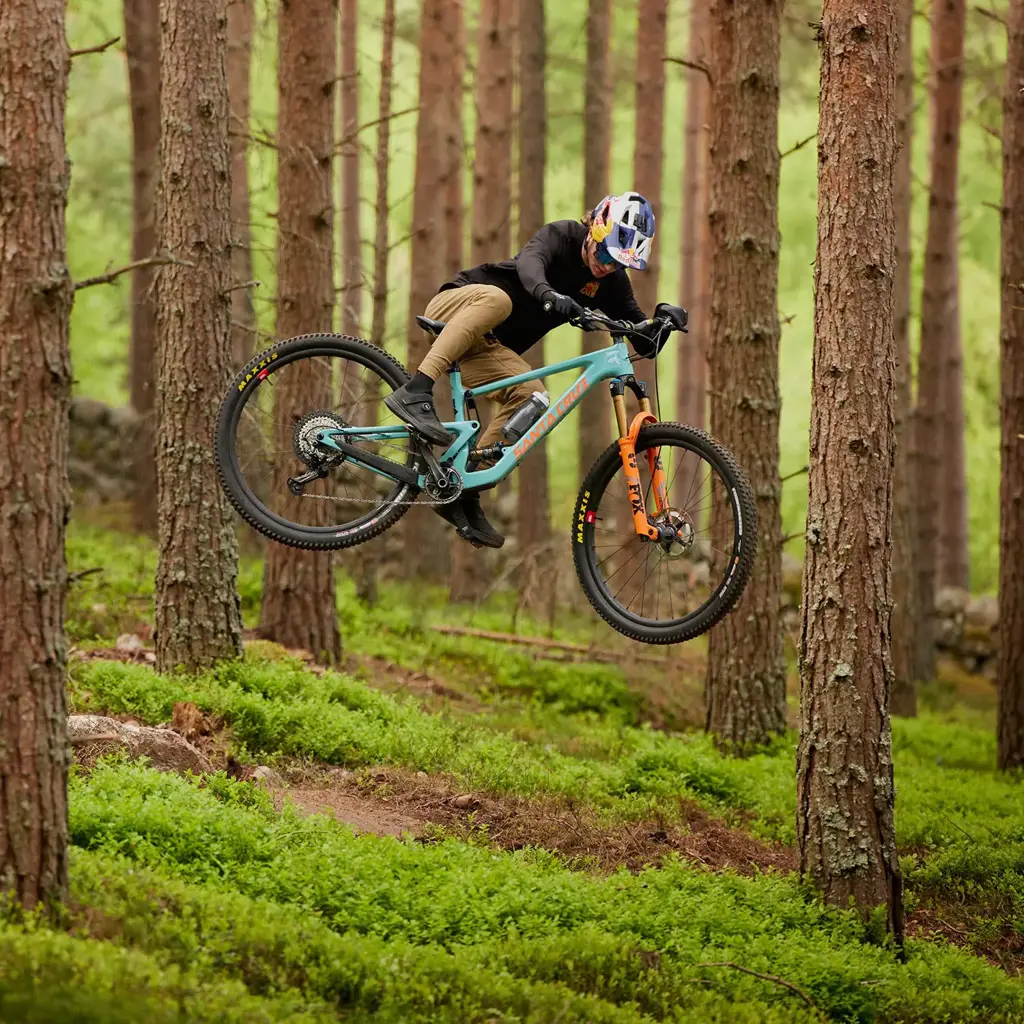
When it comes to maintenance or repairs, having the right tools and equipment can make all the difference. Whether you are a professional or a DIY enthusiast, having the necessary tools can save you time, money, and frustration. In this article, we will discuss some of the specific tools and equipment you should consider bringing for maintenance or repairs.
- Basic hand tools: Every toolbox should have a set of basic hand tools. This includes screwdrivers (both flathead and Phillips), wrenches (both adjustable and socket), pliers, and a hammer. These tools will come in handy for a wide range of tasks, from tightening loose screws to removing stubborn bolts.
- Power tools: While not necessary for every maintenance or repair job, power tools can greatly speed up the process. A cordless drill, for example, can make quick work of drilling holes or driving screws. Other power tools to consider include a circular saw, a jigsaw, and an angle grinder. These tools are especially useful for more advanced projects or when dealing with larger materials.
- Measuring tools: Accurate measurements are crucial for many maintenance and repair tasks. A tape measure, a level, and a combination square are all essential tools for ensuring that everything is lined up correctly. A laser measure can also be a useful addition, particularly for longer distances or hard-to-reach areas.
- Safety equipment: Safety should always be a top priority when working on maintenance or repairs. Make sure to have the necessary safety equipment on hand, including safety goggles, work gloves, and a dust mask. If you are working with power tools, ear protection is also recommended. Having a fire extinguisher nearby is also a good idea, especially when dealing with electrical work or flammable materials.
- Specialty tools: Depending on the specific maintenance or repair job, you may need some specialty tools. For example, if you are working on plumbing, a pipe wrench and a plunger would be essential. If you are working on electrical systems, a multimeter can help diagnose any issues. If you are working on a car, a socket set and a torque wrench may be necessary. It's always a good idea to research the specific tools needed for your particular project before starting.
In conclusion, having the right tools and equipment is essential for any maintenance or repair job. Whether you are a professional or a DIY enthusiast, investing in a set of basic hand tools, power tools, measuring tools, safety equipment, and specialty tools can help make your projects more efficient and successful. Remember to always prioritize safety and do your research to ensure you have the right tools for the job.
What to Pack for Hurtigruten Antarctica: Essential Items for Your Journey
You may want to see also

Are there any recommended snacks or hydration options for a mountain bike ride?

Staying fueled and properly hydrated during a mountain bike ride is crucial for maintaining energy and endurance. When tackling challenging trails and riding for extended periods of time, it is important to replenish your body with the necessary nutrients and fluids. Here are some recommended snacks and hydration options to consider for your next mountain bike ride:
Hydration is Key:
- Water: Start by hydrating properly before your ride, and carry a water bottle or hydration pack with you. Sip water frequently throughout your ride to prevent dehydration.
- Electrolyte drinks: During longer rides or especially hot weather, consider incorporating electrolyte drinks to replenish lost minerals. These drinks contain essential electrolytes like sodium and potassium, which help to maintain proper hydration and prevent muscle cramps.
Energizing Snacks:
- Energy bars: Look for energy bars that contain a good balance of carbohydrates, protein, and healthy fats. These bars provide a quick and convenient source of energy and can help sustain your endurance on the trail.
- Trail mix: A homemade trail mix consisting of nuts, dried fruits, and a sprinkle of dark chocolate can be a great option for longer rides. The mix provides a combination of carbohydrates, protein, and healthy fats, making it a satisfying and energy-dense snack.
- Fruit: Fresh fruits such as bananas, apples, or oranges are packed with natural sugars and fiber. They are easy to carry and provide a quick energy boost when needed.
- Peanut butter sandwiches: Peanut butter is an excellent source of energy and protein. Pack a sandwich with whole-grain bread and natural peanut butter for a satisfying and protein-rich snack.
Preparing for Longer Rides:
- Carbohydrate loading: If you are planning a long-distance or endurance ride, it can be beneficial to increase your carbohydrate intake in the days leading up to the ride. This helps to top up your glycogen stores and provides a readily available energy source during the ride.
- Portable snacks: If you will be on the trail for an extended period of time, consider packing portable snacks like energy gels or chews. These compact snacks are designed for quick and easy consumption and provide an instant energy boost.
It is important to experiment with different snacks and hydration options during your training rides to find what works best for you. Remember to listen to your body and fuel up before you start feeling fatigued. Proper nutrition and hydration will help you perform at your best and make the most out of your mountain bike ride!
The Best Footwear Options for an Alaska Cruise: What Shoes to Pack
You may want to see also
Frequently asked questions
When preparing for a mountain bike ride, it's important to pack a few essential items. Firstly, you'll want to bring your helmet, as safety should always be a top priority. Additionally, make sure to pack a hydration pack or water bottle to stay well hydrated throughout your ride. It's also a good idea to bring a spare tube and a basic bike tool kit in case you experience any mechanical issues on the trail. Lastly, don't forget to bring a fully charged phone in case of emergencies.
Yes, it's highly recommended to pack and wear protective gear for a mountain bike ride. In addition to a helmet, consider wearing knee pads and elbow guards to protect yourself from potential falls and injuries. Goggles or sunglasses can also be helpful to shield your eyes from dirt, debris, and sunlight. Additionally, wearing gloves can provide better grip on the handlebars and protect your hands in case of a crash.
When it comes to clothing for a mountain bike ride, it's important to prioritize comfort and flexibility. Opt for moisture-wicking and breathable fabrics to help keep you cool and dry. A good pair of padded cycling shorts can also provide added comfort during longer rides. Consider wearing a moisture-wicking jersey or T-shirt and a lightweight cycling jacket or vest for varying weather conditions. Don't forget to pack a pair of sturdy cycling shoes with good traction, and bring along a lightweight windbreaker or raincoat in case of unexpected weather changes.
Yes, it's essential to pack snacks and nutrition for a mountain bike ride, especially if you'll be riding for an extended period. Bring energy bars, trail mix, or other portable, high-energy snacks to keep you fueled throughout your ride. It's also important to stay hydrated, so consider packing electrolyte-replenishing drinks or electrolyte tablets to add to your water. Take into account the duration and intensity of your ride when determining how much food and water you'll need to pack.



